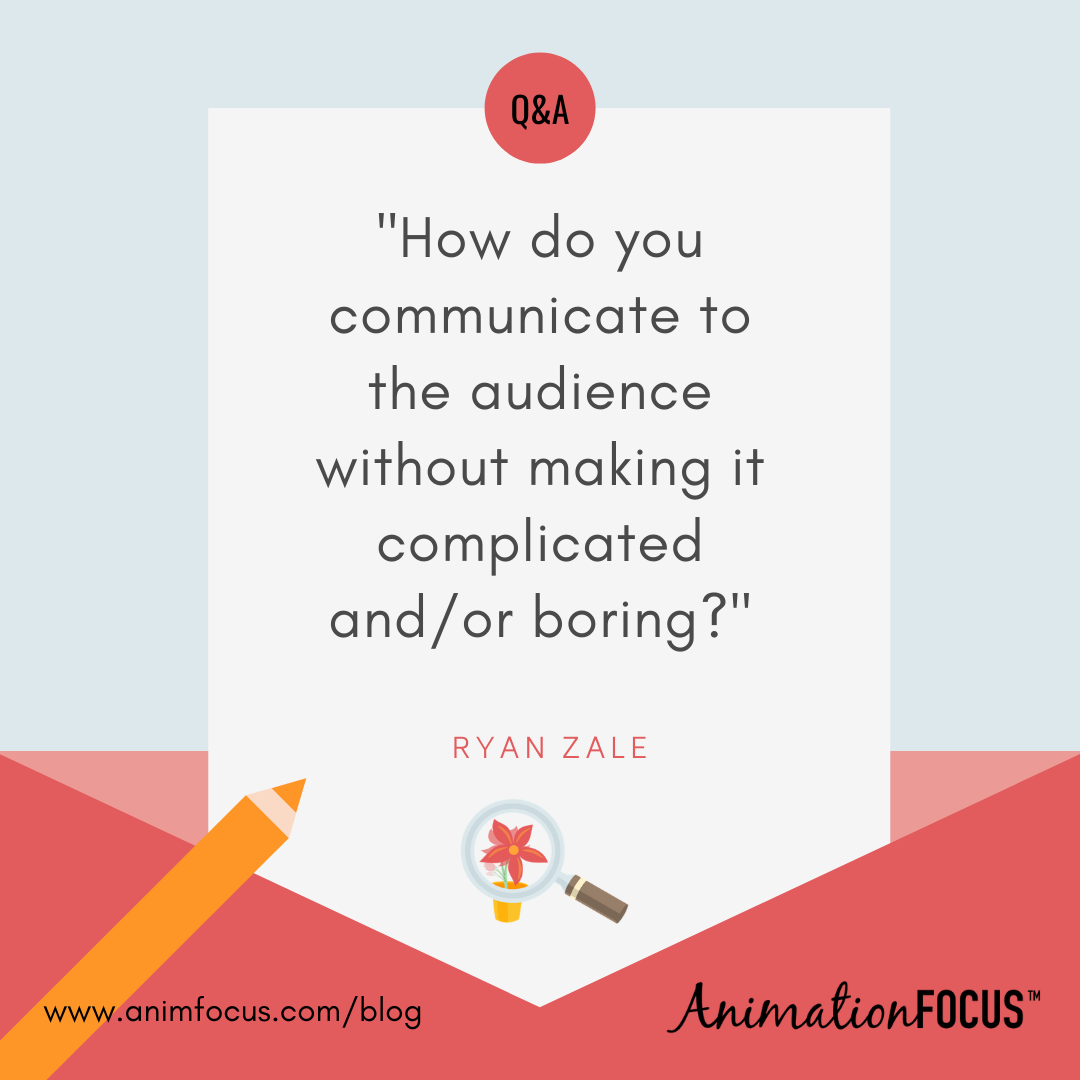Animation Focus Q&A: Communicating with the Audience
We recently asked our Animation Focus student community if they had any animation questions they would like to put to our tutors.
Ryan Zale submitted the following question about communicating with the audience. Check out Cat Hicks’ insight and advice on the subject below!
by Cat Hicks
That’s kind of the magic question, isn’t it? And oddly I think the answer is that it needs to be both and neither at the same time.
Let’s talk about boring. Boring can be cliché, overused, and uninteresting. It can also be clean, clear, and immediately recognizable. Likewise, complicated can mean convoluted and not understandable. It can also be interesting and unique.
So really you need a bit of both when thinking about your acting. It needs to be boring enough so that what you’re trying to convey is clear, but complicated enough that the performance is unique.
Let’s think of an example. Say, you need to pose a woman who is tired. You could pose her yawning, stretched upwards with a hand to her open mouth and her other fist stretched to the air. You can picture it immediately because we’ve seen it 1 million times. We can do better by thinking of the person behind the character. Why is she tired? What did her day look like? What has she been doing and what is she doing right now? Let’s say she’s a boss, tired physically from working late but also tired emotionally from having to orchestrate a mass layoff at her company. Maybe she’s spent all day in one-on-one meetings letting people go and dealing with the fallout. Now she has to draft an email to her remaining employees explaining the situation. Now we can picture her at her desk, the heaviness of the day causing her to lean forward onto the table, maybe one hand slipped beneath her glasses, cradling the weight of her head and rubbing her eye. Shoes off, legs hanging limply, breaking free of what is probably her usual poised and professional pose. Let’s say instead of her visible eye by being closed we keep it open, staring at her screen with her freehand paused on the keyboard. Now we’re telling a story! Also it’s still a story that’s recognizable enough for us to understand.
There’s 1 million ways that we can overcook this pose by adding additional ideas. Striking that balance between clarity and sophistication takes practice, and trusted feedback from others!
Making your way to an idea that is informative and interesting is easiest when thinking about character. Always try to ask yourself as many questions as you can about who your character is, what their environment is, what they’re currently doing, have recently been doing and what they need to do next. This way you can add complexity to your idea.
Don’t forget to trust your viewers feedback. They’re the best way to figure out if what you’re trying to sell is reading.
Thank you Cat, and thank you for the great question Ryan!
If you have a question to put to our tutors, drop us a note below.

